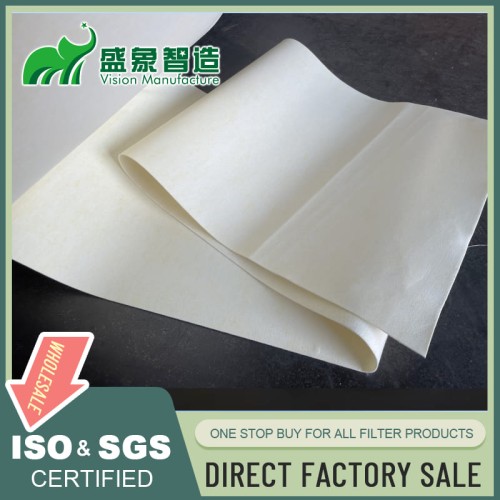
Nylon in Filtration Understands the Limitations and Alternatives
I. Introduction
Nylon, a synthetic polymer, is widely used in filtration applications due to its versatility and strength. However, the selection of materials in filtration technology is critical, and understanding the limitations of nylon is essential for optimizing performance in industrial uses. This introduction explores the role of nylon in filtration and the importance of balancing its advantages against its drawbacks.
II. Understanding Nylon as a Filtration Material
Nylon is a type of polyamide known for its excellent mechanical properties and resistance to wear and abrasion. It is manufactured through a condensation polymerization process, resulting in a material that is both durable and elastic. Common applications of nylon in filtration include water purification, air filtration, and automotive filters, where its properties can be effectively utilized to trap and remove particulates.
III. Key Disadvantages of Nylon
Despite its benefits, nylon has several disadvantages that can affect its performance in filtration applications:
- Moisture Absorption:
- Impact on Dimensional Stability: Nylon can swell and lose shape when exposed to moisture, which may compromise the filter's integrity.
- Reduced Strength When Wet: The mechanical strength of nylon decreases in wet conditions, potentially leading to material failure.
- Potential for Microbial Growth: Moist environments can promote the growth of mold and bacteria on nylon surfaces.
- Temperature Limitations:
- Low Melting Point: Nylon's lower melting point compared to materials like PTFE or fiberglass limits its use in high-temperature applications.
- Performance Degradation at High Temperatures: Continuous exposure to high temperatures can degrade nylon fibers.
- Thermal Expansion Issues: Nylon may expand or contract in response to temperature changes, affecting the fit and efficiency of the filter.
- Chemical Resistance Concerns:
- Vulnerability to Certain Acids and Chemicals: Nylon is susceptible to attack by strong acids and some chemicals, which can degrade the material.
- Degradation in Specific Industrial Environments: Environments with harsh chemical exposures are not suitable for nylon filters.
- Limited Applicability in Aggressive Chemical Filtration: The chemical limitations of nylon restrict its use in certain industrial filtration applications.
IV. Performance Drawbacks in Filtration
Nylon also exhibits several performance-related drawbacks in filtration settings:
- Electrostatic Charge Buildup: Nylon can generate static electricity, which may attract dust and make cleaning difficult.
- Potential for Fiber Shedding: Loose fibers from nylon fabric can contaminate the filtered media.
- Limitations in Fine Particle Filtration: Nylon may not effectively filter out ultra-fine particles.
- Reduced Efficiency in Oil and Hydrocarbon Environments: Nylon's hydrophilic nature makes it less effective in oil-based or hydrophobic environments.
V. Environmental Considerations
The environmental impact of nylon includes:
- Non-biodegradability: Nylon does not break down easily, contributing to environmental pollution.
- Energy-intensive Production Process: The manufacturing of nylon is energy-consuming, which adds to its carbon footprint.
- Challenges in Recycling: Recycling nylon is complex and not always feasible, which may lead to increased waste.
VI. Cost Factors
Economic considerations related to nylon include:
- Initial Material Costs vs. Alternatives: Nylon is generally less expensive than some high-performance materials but may not always offer the best value due to its limitations.
- Potential for Frequent Replacements: Due to durability issues, nylon components may need to be replaced more often, increasing long-term costs.
- Long-term Economic Considerations: Evaluating the total cost of ownership, including maintenance and disposal, is crucial when choosing filtration materials.
VII. Maintenance and Durability Issues
Maintaining nylon filtration systems presents several challenges:
- Cleaning Difficulties Due to Moisture Absorption: Water absorbed by nylon can make cleaning and drying processes more cumbersome.
- Potential for Stretching and Deformation: Nylon's elasticity might lead to stretching under stress, affecting the filter's performance.
- Lifespan in Harsh Industrial Environments: Nylon may have a shorter service life in environments with extreme temperatures or chemical exposures.
VIII. Regulatory and Compliance Challenges
Nylon's use in filtration must comply with industry-specific regulations:
- Food and Pharmaceutical Industry Limitations: Direct contact with consumable products may be restricted.
- Environmental Regulations Impact: Compliance with waste disposal and recycling mandates is necessary.
- Workplace Safety Considerations: Handling and disposal of nylon must adhere to safety standards to protect workers.
IX. Comparison with Alternative Materials
Alternatives to nylon in filtration applications include:
- Polyester vs. Nylon: Polyester often offers similar properties with better moisture resistance.
- Polypropylene as an Alternative: Provides better chemical resistance and lower moisture absorption.
- High-performance Materials (PTFE, PPS): These materials offer superior temperature and chemical resistance, albeit at a higher cost.
X. Mitigating Nylon's Disadvantages
Strategies to overcome the limitations of nylon include:
- Surface Treatments and Coatings: Applying protective coatings to enhance moisture and chemical resistance.
- Blending with Other Fibers: Combining nylon with other materials can compensate for its weaknesses.
- Improved Manufacturing Techniques: Developing new methods to enhance the properties of nylon fibers.
- Vision Filter's Approach: Leveraging advanced technologies to optimize the use of nylon in filtration applications.
XI. Case Studies: When Nylon Underperforms
Real-world examples illustrate scenarios where nylon's limitations have impacted filtration performance, and how innovative solutions have addressed these challenges.
XII. Future Outlook for Nylon in Filtration
The future of nylon in filtration looks towards:
- Emerging Alternatives and Technologies: Development of new materials that may offer better performance.
- Potential Improvements in Nylon Properties: Ongoing research aims to enhance the thermal and chemical resistance of nylon.
- Shifting Industry Trends: Adaptation to changing regulatory and environmental standards.
XIII. Conclusion
While nylon offers several advantages in filtration applications, its limitations necessitate careful consideration of material selection. Understanding the drawbacks and exploring alternatives is essential for achieving optimal filtration performance. Vision Filter remains at the forefront of filtration technology, providing expert consultation and innovative solutions to meet the evolving needs of the industry.
Leave a comment

